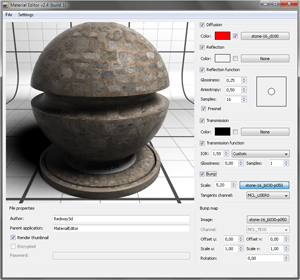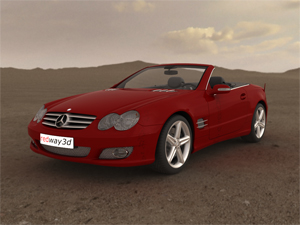The OpenGL SDK uses both GPU and CPU to create a full rendering middleware stack.
Ray traced rendering is fast becoming a check-off item for all 3D software and quite a few companies are vying to provide that capability as middleware. Paris-based Redway3D is bringing a more comprehensive product to the market. Its middleware technology combines ray tracing, accelerated 2D, and 3D in a single integrated API to speed up the performance of visualization software.

The company’s RedSDK is OpenGL-based and takes advantage of both CPU and GPU. Redway3D has optimized its technology to work with the DWGdirect and DGNdirect libraries from the Open Design Alliance. They’re also working with the IntelliCAD consortium. Members of ODA or IntelliCAD can add fast rendering and visualization to their applications (for additional license fees). IMSI/Design is using the RedSDK in its products including its newly released TurboViewer as well as DoubleCAD, IMSI’s product based on the ODA’s Teigha engine, and its flagship TurboCAD. IMSI/Design COO Bob Mayer writes that the addition of the RedSDK technology has dramatically improved the performance of their products, as much as 60X in some cases. Testimonials from other customers report dramatic increases as well.
Redway3D was founded in 2004 to take advantage of powerful new GPUs. A co-founder is Renaud Deparis who was formerly at Dassault Systèmes as 3D visualization manager. In addition to IMSI/Design, their customer list includes Airbus, Missler Software, Blur Studios, and Ensemble Studios. The company has been working on its hardware optimization with AMD, Nvidia, and Dell.
Redway3D technology uses the CPU to accelerate interactions between objects and light sources, and it uses the GPU for systematic rendering. The company says its Red technology enables interactive rendering for a variety of effects including smooth and colored shadows, reflections, refractions, transparencies, and more.
The Redsdk is a C++ software development kit. The company says they offer a single API for real-time 2D, 3D, and photorealistic rendering. It combines a real-time engine with a hardware-accelerated ray tracer. Rendering is dynamic, allowing changes to be made without slowing the process.
What do we think?

There have been several golden ages for graphics middleware: the early days of visual software in the second half of the nineties, the battles over renderers and other APIs during the rise of the graphics processors, and now the evolution of renderers and ray tracers. There were the go-go years for 3D gaming in the early 2000s. And now, the new breed of processors which balance CPU and GPU cores have opened the door for more efficient middleware for graphics.





